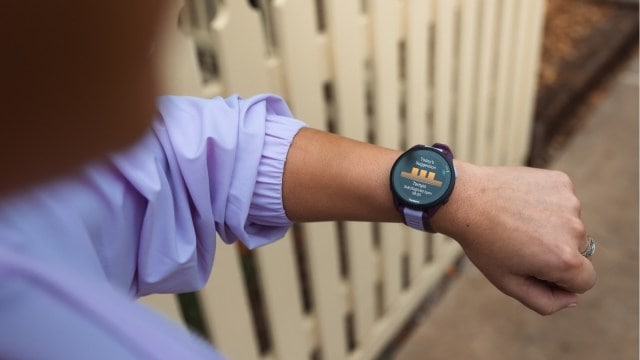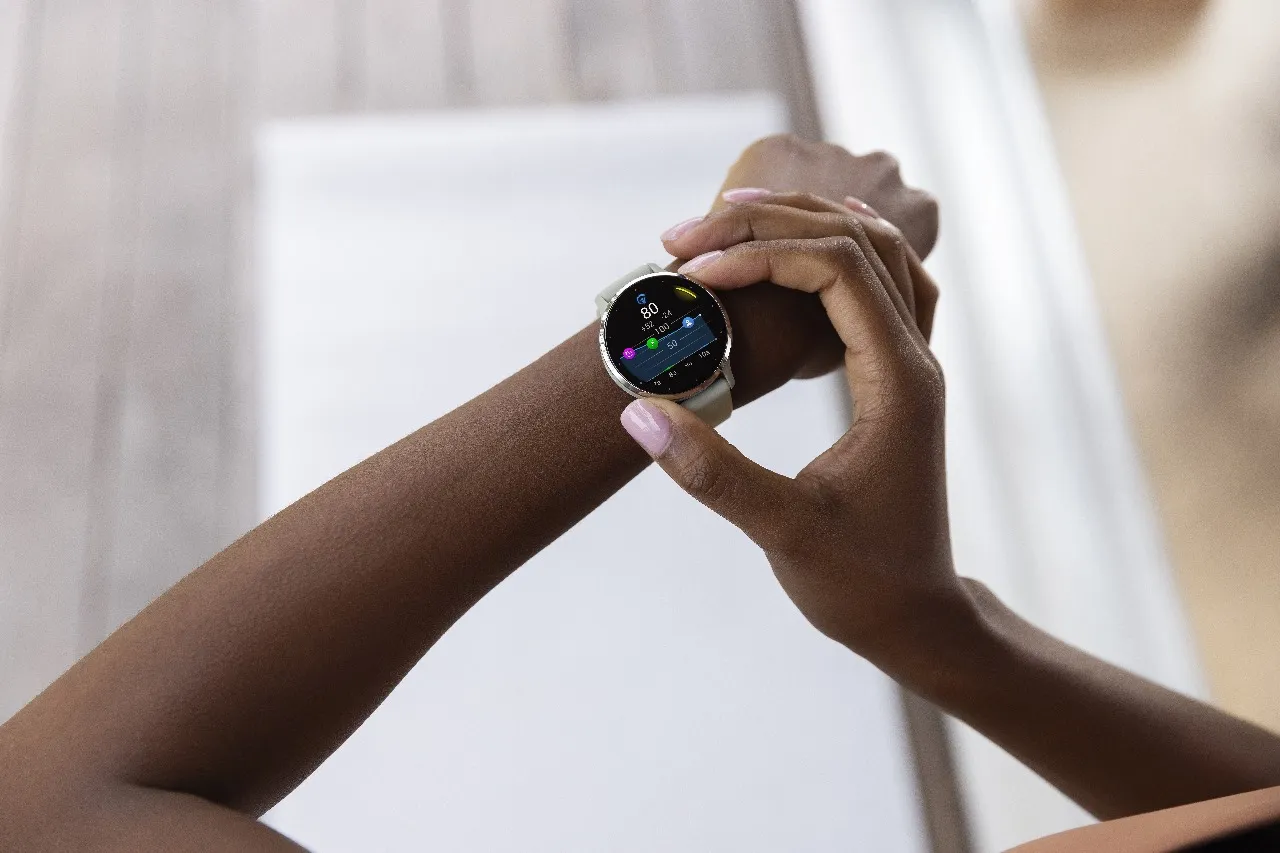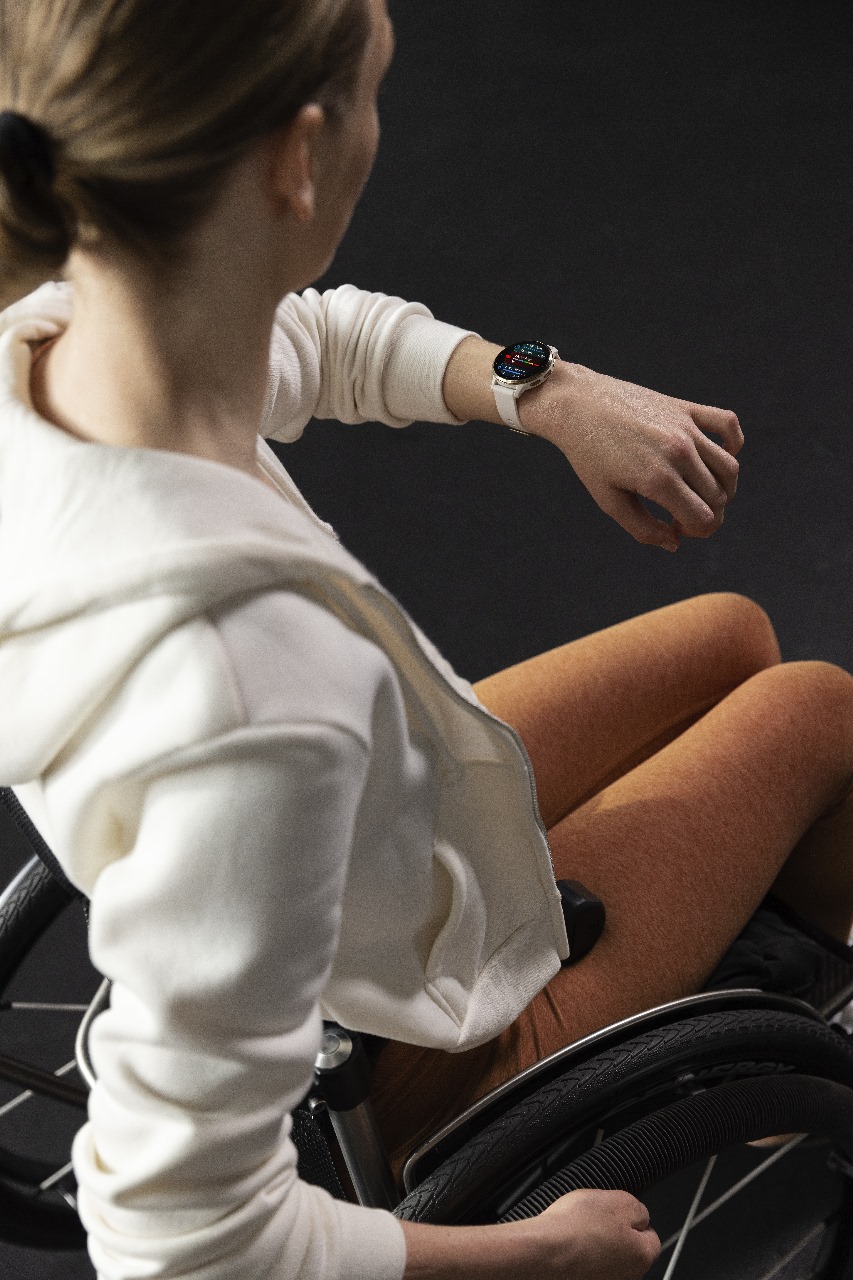Spotting a Garmin smartwatch on the wrist of an athlete, runner, or golfer isn’t surprising. After all, the Schaffhausen, Switzerland-based company has been selling wearable activity trackers since 2003 and is best known for offering high-end watches geared toward helping athletes monitor activity and health, with some models costing up to $3,500. However, in an ever-changing smartwatch market, with more players entering the health and fitness space, Garmin is becoming increasingly bullish about positioning its wearables as standalone fitness and health tools. In fact, the wearables business is one of the most important segments for the company.
As Garmin eyes India as a potential market for its premium outdoor watches, the country’s size and growing base of fitness and sports enthusiasts make it a unique fit for the company, which aims to incorporate features often overlooked by other manufacturers in this space.

 Juha Villanen, the Head of B2B & Partnerships for EMEA Emerging Markets and India at Garmin. (Image credit: Garmin)
Juha Villanen, the Head of B2B & Partnerships for EMEA Emerging Markets and India at Garmin. (Image credit: Garmin)
The Indian Express’s Anuj Bhatia exclusively spoke to Juha Villanen, the Head of B2B and Partnerships for EMEA Emerging Markets and India at Garmin, who is based in Munich, Germany, about how the company is differentiating its wearables from mass-market smartwatches and why consumers are willing to pay a premium price for a Garmin watch.
Here are the edited excerpts from the interview with Villanen:
Q: How big is the market for wearables aimed at athletes, runners, and adventurers in India compared to more mature and developed markets like the US and Europe?
Villanen: India is a heterogeneous market that’s very different from any other markets we operate in, because other markets where we are present have been much more homogeneous in terms of population and purchasing power. India is unique in the sense that it has high-tech centers with people who have purchasing power and an interest in sports and fitness. North America and Europe have been our biggest markets. I am quite sure that a majority of these athletes in India are wearing a Garmin watch, but this is still only a small segment for us. That’s why we have identified the potential and are currently investing not only in running but also in other segments, mostly in the wellness and lifestyle segments of the wearable business.
 Garmin started restructuring and revamping their Indian operations about a year ago. (Image credit: Garmin)
Garmin started restructuring and revamping their Indian operations about a year ago. (Image credit: Garmin)
Q: Given that Garmin aims its wearables at triathletes, distance runners, and enthusiasts, and considering that your watches come at a higher cost, does it pose a challenge to position them for Indian consumers? Or is it a myth that Indian consumers prefer cheaper variants of your high-end adventure smartwatches?
Story continues below this ad
Villanen: We don’t have a different pricing strategy for India compared to any other market. We operate at the higher end of the scale here, but it is up to us to make it clear to consumers that, for instance, if you consider battery life or sensor accuracy, a $20 smartwatch cannot compare to ours. Our smartwatches provide accurate sensor data and key features that real professionals need, with battery life ranging from two weeks to up to 90 days. We need to communicate these differences to Indian users, which is also the basis for our investment. This helps make the pricing more acceptable in that sense. That being said, we have the broadest portfolio of wearable devices on the market, ranging from $100 to $3,500. We are always working on making devices more affordable in certain segments and will be communicating in the future that you cannot provide the same quality with a $20 smartwatch as you can with our devices.
Let me tell you that in a country like Kazakhstan, we do have devices like the Garmin Marq series that cost between $2,500 and $3,500, and then we have the Fenix series priced from $1,000 to $1,200. In all of these countries, including India, we have a substantial base of customers who can afford these products. However, globally, our lineup of watches priced between $350 and $450 remains popular. Surprisingly, I wouldn’t say that the cheapest watches are the most popular in India where consumers in urban centers, well-educated, fitness and sports-oriented individuals—can afford our wellness lineup, running watches, and even the higher-end outdoor watches.
Q: Over the years, many brands have tried to sell expensive, rugged, fitness-oriented smartwatches, but none succeeded until Apple entered the picture with the Apple Watch Ultra. Has Apple eaten into the market share of the smartwatch segment dominated by Garmin, which has pocketed billions in sales from endurance sports watches?
Villanen: Apple is a very large competitor, and the Apple Watch Ultra is trying to target our price points in certain product families, but I’m not too worried about that specific segment of our products. They offer an ecosystem of various features, but they don’t focus on specific sports in the same way we do. Our strategy is to cater to niche markets and communicate the benefits to consumers. For instance, we offer a running watch with a 90-day battery life and solar charging capabilities.
Story continues below this ad
I have not seen any other similar product on the market that can achieve that without frequent charging. These are the elements on which we focus. We have features specifically designed for runners in our watches. We create the hardware and features with a clear purpose in mind. Unlike some other smartwatch companies that may have a single design and rely on software and apps, we develop our hardware for specific functions. If you talk to runners and athletes, they value the product’s reliability and features, which is why they are willing to pay for it. We not only consider performance but also focus on biometric sensors and health data relevant to enhancing athletic performance.
 Garmin to focus on improving the user interface and software experience of their smartwatches. (Image credit: Garmin)
Garmin to focus on improving the user interface and software experience of their smartwatches. (Image credit: Garmin)
Q: A feature like Garmin Pay allows consumers to pay for items at select stores using a Garmin smartwatch, but it has yet to be rolled out in India, a digitally savvy country where cashless payments are on the rise. Can we expect the rollout of Garmin Pay in India anytime soon?
Villanen: We are working with our partners on this. The payment ecosystem is quite complicated. Garmin Pay is a very popular feature in our emerging markets, and I truly hope that, together with our payment ecosystem partners, we can bring Garmin Pay to India as soon as possible.
Q: How does Garmin decide on the features that will go onto a new smartwatch model? Do you look at the data, reach out to consumers, or do a market search?
Story continues below this ad
Villanen: In designing running features, for example, we create hardware for specific purposes and target groups. We analyze the data we collect from our users, who are very loyal to Garmin. Their feedback is valuable, as they tell us what they need. We then analyze this feedback, and since we are an engineering company, we excel at this process. Ultimately, we ensure that our developments add value for our users within that specific target group. We continuously improve the devices, and the development of new technologies happens all the time, alongside advancements in sensor technology, bringing new opportunities for us and our users, especially in running. Some users are very specific about what they need and what kind of analytics they require. They communicate this to us, and we take that into account when making improvements. Our goal is to ensure that our devices work in a highly reliable manner.
Q: Now that ecosystem players like Apple, Samsung, and Google have entered the fitness-enthusiast smartwatch space, the products they offer on the market feature a sleek user interface and improved software integration. How does Garmin plan to enhance the UI on your smartwatches?
Villanen: We compete with everyone, not just Apple and Samsung. We face competition in all our niches, but we have different kinds of comparisons. Coming back to your question, I would say we constantly strive to improve the Garmin Connect mobile app, which serves as the user interface and software side of our products. We aim to present health, fitness, and sports elements in a more understandable way while adding overall smartwatch features. Our primary focus is on wellness and health fitness first, followed by other features. In the last 18 months, there has been a continuous effort to make it easier for users to navigate the interface. If you look at the watches now, you’ll see AMOLED displays and touchscreens, along with our nearly patented five-button navigation. The user interface has become much clearer, making it easier to find the features you’re looking for. Even though the basic look of the user interface is similar, it’s always easy to return to a Garmin device. I see significant improvements in usability, but it’s an ongoing development process.
Q: Garmin caters to the adventure smartwatch segment and has built a strong business in this area. So far, Garmin has done really well for itself in this segment, but don’t you think that, given the entry of new players, there is also a need to focus on usability to reach new consumers beyond the traditional target group?
Story continues below this ad
Villanen: It’s a big focus for Garmin in general, but in India, we need to make special efforts to communicate that all the features we offer and our emphasis on health, fitness, and sports are best-in-class in the market. This is work we must do constantly, especially in India. That being said, post-pandemic, we have focused on our wellness and fitness offerings in addition to our traditionally strong outdoor performance watches. We are not yet well known in that space in India, and our strongest market is among athletes. However, we are actively working to reach out to the urban, well-educated, fitness-oriented consumer base in India.
Q: How big is the focus on health for Garmin now, and how are you working to introduce new health-related features on your smartwatches? Are you closely monitoring competitors, or do you conduct your own internal studies to identify and implement those features?
Villanen: Health has been a big focus for Garmin. We even have a business vertical called Garmin Health that specifically works in this area. Additionally, we acquired Firstbeat Analytics, a Finnish company that specialises in physiological analytics and algorithms. We also have an open ecosystem, which means we provide APIs and SDKs, application interfaces, and software development tools to enable professional healthcare organizations and clinical research organizations to tap into the wearable data from Garmin devices and utilize it within their respective fields. This includes not just the data but also the connected ecosystem necessary for wearable health technology in the future. In India, we are working closely with the All India Institute of Medical Sciences (AIIMS Delhi), which uses our wearables to conduct medical studies. They rely on the sensor accuracy and features of Garmin watches.
Q: How are consumers responding to the health features on Garmin watches, especially during and after the pandemic? Is there any feature that you think resonates more with users?
Story continues below this ad
Villanen: Our watches track heart rate and heart rate variability, allowing us to measure a metric called the stress index. This feature helps identify when your body is under stress, whether from illness or other factors. It became particularly popular during and after the pandemic, as people relied on heart rate, heart rate variability, and the stress index to assess their well-being—wondering, “Am I okay? How am I doing? Should I rest or check if I’m getting ill?” These metrics have been widely used. Post-pandemic, we also introduced a feature called Body Battery. It combines various metrics, including sleep, heart rate, stress, and heart rate variability, to provide a body energy or “body battery” value for the day. This feature allows users to monitor their overall well-being and understand if their values are in a healthy range at any given time.
Q: What kinds of investments are you looking to make in order to improve brand awareness in a market like India?
Villanen: We recently began to reorganise and revamp our operations in India. We are not only building a clear strategy to establish retail channels in the country but are also actively creating strategic partnerships within the space. We are a very different company. As we grow, we follow a purpose-oriented path through specific niches, targeting our efforts very precisely. Therefore, our market entry and exposure are distinct from those of our competitors.



 Juha Villanen, the Head of B2B & Partnerships for EMEA Emerging Markets and India at Garmin. (Image credit: Garmin)
Juha Villanen, the Head of B2B & Partnerships for EMEA Emerging Markets and India at Garmin. (Image credit: Garmin) Garmin started restructuring and revamping their Indian operations about a year ago. (Image credit: Garmin)
Garmin started restructuring and revamping their Indian operations about a year ago. (Image credit: Garmin) Garmin to focus on improving the user interface and software experience of their smartwatches. (Image credit: Garmin)
Garmin to focus on improving the user interface and software experience of their smartwatches. (Image credit: Garmin)





